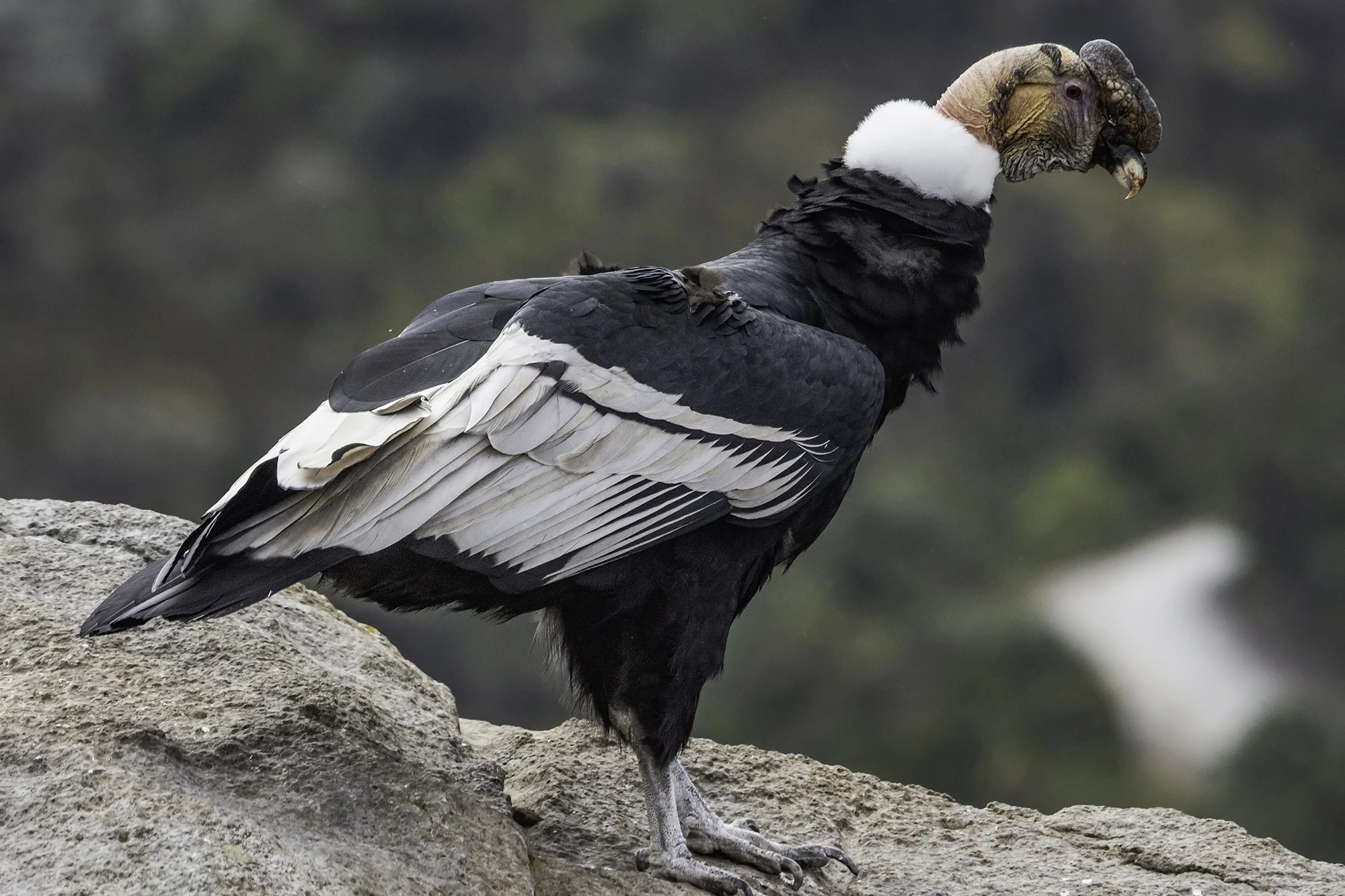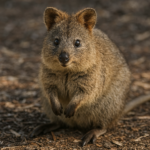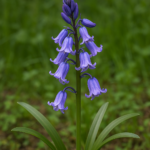
The Andean Condor, a symbol of freedom and majesty, soars high above the rugged peaks of the Andes Mountains, captivating the hearts of bird enthusiasts and nature lovers alike. With a wingspan that can reach up to 3.3 meters (10.8 feet), this magnificent bird is not only one of the largest flying birds in the world but also an important cultural icon in South American folklore. Despite its grandeur, the Andean Condor faces numerous challenges in the wild, making it a subject of both admiration and concern. In this blog post, we will explore 25 fascinating facts about the Andean Condor, delving into its unique characteristics, behavior, and the conservation efforts aimed at preserving this remarkable species for future generations. Whether you’re a seasoned ornithologist or simply curious about wildlife, these intriguing insights will deepen your appreciation for one of nature’s most awe-inspiring creatures.
The Andean Condor is the largest flying bird in the world by combined measurement of weight and wingspan. This remarkable bird, scientifically known as Vultur gryphus, is not only notable for its size but also for its impressive adaptations for soaring flight. Its large body and extensive wingspan make it a true giant of the skies, capable of covering vast distances in search of food. The combination of weight and wingspan contributes to its status as the largest flying bird, a title that highlights its unique ecological role in the Andes and surrounding regions.
Their wingspan can reach up to 10.5 feet, making them incredible gliders. This expansive wingspan allows the Andean Condor to glide effortlessly on thermal updrafts, enabling it to soar at altitudes of up to 15,000 feet. The ability to glide without flapping its wings not only conserves energy but also allows the condor to cover large areas while searching for carrion. This adaptation is crucial for a bird that primarily relies on the visual detection of food from great heights, showcasing its evolutionary prowess in navigating the mountainous terrain of its habitat.
These birds can weigh up to 33 pounds, which is quite hefty for a bird. Weighing in at around 33 pounds, the Andean Condor is one of the heaviest flying birds, a characteristic that is both impressive and functional. The substantial weight contributes to its ability to withstand strong winds and harsh weather conditions in the Andes. This heft also plays a role in its survival, as it can consume large quantities of carrion, providing it with the energy needed to sustain its lifestyle in the rugged mountain environment.
Andean Condors are part of the vulture family, known for their scavenging habits. As members of the vulture family, these birds play a vital role in their ecosystem by recycling nutrients and helping to keep the environment clean. Their scavenging habits ensure that dead animals do not accumulate and contribute to the spread of disease. This ecological niche is essential for maintaining the health of the ecosystems they inhabit, highlighting the importance of condors and other scavengers in the natural world.
They primarily feed on carrion, which helps keep their ecosystem clean. The diet of the Andean Condor consists mainly of carrion, which includes the remains of dead animals such as livestock and wild game. By feeding on carrion, they help to prevent the spread of disease and promote a balanced ecosystem. This scavenging behavior is not only crucial for their survival but also for the health of their habitat, as it reduces the potential for rotting carcasses that could attract pests and pathogens.
These birds can live up to 50 years in the wild, a long lifespan for birds. The longevity of the Andean Condor, with a lifespan that can reach 50 years, is remarkable among bird species. This extended life allows them to develop strong social bonds and accumulate knowledge about their environment, which is beneficial for survival. Their long lifespan also means that they have a slow reproductive rate, as they typically only raise a few chicks throughout their life, making conservation efforts critical for their populations.
Andean Condors are found in South America, particularly along the Andes mountain range. Their range extends through several countries, including Venezuela, Colombia, Ecuador, Peru, Bolivia, Chile, and Argentina. The diverse habitats found within the Andes, from high-altitude plateaus to rugged mountain cliffs, provide ideal nesting and roosting sites for these birds. This geographic distribution highlights the importance of the Andes as a crucial habitat for the species, which relies on the unique environmental conditions found in this region.
They are considered a national symbol in several South American countries, including Argentina, Bolivia, Chile, Colombia, Ecuador, and Peru. The Andean Condor holds significant cultural importance in many South American nations, often symbolizing freedom and strength. This reverence is reflected in folklore, national emblems, and various artistic representations. As a national symbol, the condor represents the rich biodiversity of the Andes and the importance of wildlife conservation in maintaining cultural heritage.
They have a bald head, which helps keep them clean while feeding on carrion. The Andean Condor’s bald head is an adaptation that serves multiple purposes. This feature allows them to feed on carrion without getting feathers soiled by blood and decaying matter, which could lead to infections. Additionally, the lack of feathers on their head helps regulate temperature and reduces the risk of overheating during their long flights. This unique physical trait is an essential aspect of their survival strategy as scavengers.
Their feathers are mostly black, but males have a distinctive white collar around their necks. The plumage of the Andean Condor is predominantly black, which provides excellent camouflage against the rocky terrain of the Andes, allowing them to blend into their surroundings while roosting or nesting. Males, in particular, are adorned with a striking white collar that encircles their necks, creating a stark contrast against their dark feathers. This collar not only serves as a visual marker for sexual dimorphism, helping to distinguish between males and females, but also plays a role in courtship displays. The distinctive coloration and patterns of their feathers are essential for social interactions and mating rituals within their species.
Males also have a large comb on their heads, which is absent in females. The large comb found on the heads of male Andean Condors is another feature that sets them apart from females. This fleshy structure is not only a secondary sexual characteristic but also plays a role in communication and social interactions among condors. The comb may become more pronounced during mating displays or aggressive interactions, signaling dominance or readiness to mate. The absence of this comb in females further emphasizes the sexual dimorphism in this species, contributing to the complex social dynamics of Andean Condors.
Their strong, hooked beaks are perfect for tearing through tough animal hides. The Andean Condor possesses a powerful, hooked beak that is specifically adapted for its scavenging lifestyle. This beak is designed to tear through tough hides and access the nutrient-rich flesh beneath. The strength and shape of the beak allow the condor to efficiently consume carrion, which is often tough and difficult to break apart. This adaptation is crucial for their survival, as it enables them to exploit a food source that many other animals cannot access, ensuring their role as effective scavengers in their ecosystem.
Andean Condors have sharp talons, but they are not used for hunting; instead, they help in gripping and tearing food. While Andean Condors do have sharp talons, these are not primarily used for hunting, as they are scavengers rather than predators. Instead, their talons are adapted for gripping onto rocky surfaces and for assisting in the tearing of carrion during feeding. Unlike birds of prey that use their talons to capture live prey, condors rely on their keen eyesight to locate food from the air and then use their strong legs and talons to stabilize themselves while feeding on carcasses. This adaptation allows them to efficiently access their food source in a variety of environments.
Their eyesight is incredibly sharp, allowing them to spot food from great heights. One of the most remarkable adaptations of the Andean Condor is its exceptional eyesight, which is crucial for locating carrion from high altitudes. Their large, forward-facing eyes provide a wide field of vision and enable them to detect movement and color variations in the landscape below. This keen eyesight allows them to spot potential food sources from several miles away while soaring effortlessly on thermal currents. The ability to see such distances is vital for their scavenging lifestyle, as it increases their chances of finding food in the vast and rugged terrains of the Andes.
Andean Condors are known for their soaring flight, often gliding for hours without flapping their wings. The Andean Condor is renowned for its impressive soaring capabilities, which allow it to glide effortlessly for extended periods without expending much energy. By utilizing thermal updrafts—columns of warm air rising from the ground—these birds can ascend to great heights and cover vast distances with minimal effort. This soaring behavior is not only energy-efficient but also essential for their scavenging lifestyle, as it enables them to survey large areas in search of carrion. Their ability to soar for hours without flapping their wings exemplifies their adaptation to the high-altitude environments of the Andes, where they can navigate the mountainous landscape with grace and precision.
They use thermal air currents to stay aloft, conserving energy while searching for food. The Andean Condor’s mastery of using thermal air currents is a critical aspect of its survival strategy. By riding these rising columns of warm air, they can gain altitude without the need for constant flapping, which would quickly tire them out. This energy-saving technique allows them to remain airborne for long periods while scanning for food below. The ability to efficiently utilize thermal currents is especially important in the Andes, where the varied topography creates ideal conditions for these updrafts. This adaptation not only enhances their foraging efficiency but also allows them to cover vast distances in search of carrion.
These birds are social and often roost in groups on cliff edges. Andean Condors are highly social birds that often gather in groups, especially when roosting or feeding. They tend to prefer cliff edges and high ledges for their roosting sites, where they can take advantage of the thermals and have a vantage point to spot potential food sources. Social interactions among condors can include vocalizations, displays of dominance, and mutual grooming. Roosting in groups also provides safety in numbers, as they can watch for potential threats while resting. This social behavior is an essential part of their life cycle, as it fosters community bonds and enhances their survival in the wild.
They have a slow reproductive rate, usually laying only one egg every two years. The reproductive strategy of the Andean Condor is characterized by a low reproductive rate, with females typically laying only one egg every two years. This slow breeding cycle is a significant factor in their population dynamics, as it makes recovery from population declines challenging. The lengthy incubation period and the extended time that chicks remain dependent on their parents for food and protection further contribute to their low reproductive output. This strategy reflects the bird’s adaptation to its environment, where the survival of offspring is critical in a landscape where food availability can be unpredictable.
Both parents take turns incubating the egg and feeding the chick once it hatches. In a display of strong parental care, both the male and female Andean Condor take turns incubating their single egg. This shared responsibility ensures that the egg is kept warm and protected from potential threats. Once the chick hatches, both parents continue to play active roles in feeding and caring for their young. They regurgitate food for the chick, providing it with the necessary nutrients to grow and develop. This cooperative parenting behavior is vital for the survival of the chick, as it allows for a higher chance of successful rearing in the challenging environments where these birds live.
The chicks stay with their parents for up to two years before becoming independent. After hatching, Andean Condor chicks remain dependent on their parents for an extended period, often staying with them for up to two years. During this time, they learn essential survival skills, such as locating food and navigating their mountainous habitat. The prolonged dependency period allows the young condors to gain the experience and knowledge needed to thrive independently. This extended family dynamic is crucial for their development, as it increases their chances of survival in the wild, where they face various challenges, including competition for food and threats from predators.
The Andean Condor is listed as Near Threatened by the International Union for Conservation of Nature (IUCN). Due to various factors, including habitat loss and environmental threats, the Andean Condor is classified as Near Threatened by the International Union for Conservation of Nature (IUCN). This designation highlights the need for conservation efforts to protect the species and its habitat. The decline in their population is concerning, as it indicates the fragility of their ecosystem and the impact of human activities on wildlife. Conservationists are actively working to raise awareness about the challenges faced by the Andean Condor and to implement measures that can help stabilize and increase their populations.
The Andean Condor, a majestic bird known for its impressive wingspan, is facing critical threats primarily due to habitat loss and poisoning. As human activities expand, the natural habitats of these birds are increasingly encroached upon by agriculture, urban development, and deforestation. This loss of habitat not only reduces their nesting and feeding grounds but also fragments their populations, making it harder for them to find mates and sustain genetic diversity. Additionally, the use of pesticides in livestock carcasses has led to unintentional poisoning of the condors, which often scavenge on these carcasses. This form of poisoning poses a significant risk to their survival, as it can lead to decreased population numbers and reproductive success.
In response to the declining numbers of the Andean Condor, various conservation programs have been implemented to address these challenges. These programs prioritize habitat protection, ensuring that critical areas are preserved from development and degradation. Captive breeding initiatives have also been established, where condors are bred in controlled environments to increase their population numbers. Once these birds reach maturity, they are reintroduced into their natural habitats, aiming to bolster wild populations. These efforts are often supported by local communities and organizations, fostering a collaborative approach to conservation that emphasizes the importance of protecting this iconic species.
Public awareness campaigns play a crucial role in the conservation of the Andean Condor by educating communities about the importance of this species and the threats it faces. These campaigns often focus on reducing human-wildlife conflict, as local farmers may view condors as a threat to their livestock. By promoting coexistence strategies, such as providing alternative food sources or encouraging the use of carrion disposal methods that do not involve pesticides, these initiatives aim to foster a more harmonious relationship between humans and condors. Increased awareness can lead to community involvement in conservation efforts, as well as support for policies that protect these magnificent birds and their habitats.
To safeguard the Andean Condor and its habitat, several countries in South America have designated protected areas specifically for these birds. These conservation zones are critical for preserving the ecosystems that condors rely on for nesting, feeding, and roosting. By establishing these protected areas, governments and conservation organizations can ensure that the natural landscapes remain intact and free from harmful human activities. These zones also serve as vital research sites where scientists can study the behavior and ecology of the Andean Condor, contributing to more effective conservation strategies. The establishment of such protected areas reflects a growing recognition of the need to prioritize biodiversity and the protection of endangered species like the Andean Condor.
Frequently Asked Questions about Andean Condor:
1. What is the scientific name of the Andean Condor?
The scientific name of the Andean Condor is Vultur gryphus. This name reflects its classification within the family Cathartidae, which includes New World vultures. The species name “gryphus” is derived from the mythical creature, the griffin, known for its strength and majestic appearance, similar to the condor.
2. What is the habitat of the Andean Condor?
Andean Condors are primarily found in the mountainous regions of South America, particularly in the Andes Mountains. Their habitat ranges from arid scrublands to high-altitude grasslands, typically at elevations between 3,000 and 5,000 meters (9,800 to 16,400 feet). They prefer open areas where they can soar and search for food, such as carrion, which constitutes the majority of their diet.
3. What do Andean Condors eat?
Andean Condors are scavengers, primarily feeding on carrion. They play a critical ecological role by consuming the remains of dead animals, which helps prevent the spread of disease. Their diet includes the carcasses of large mammals such as deer, cattle, and sheep. They have excellent eyesight that allows them to spot carcasses from great heights while soaring.
4. How long do Andean Condors live?
Andean Condors have a long lifespan, often living up to 60 years or more in the wild. In captivity, they can live even longer, sometimes exceeding 75 years. Their longevity is attributed to their slow reproductive rate and the fact that they have few natural predators as adults.
5. How do Andean Condors reproduce?
Andean Condors are monogamous and typically mate for life. They reach sexual maturity around 5 to 6 years of age. The female usually lays one egg every two years, which both parents incubate for about 54 to 60 days. The chick is dependent on its parents for food and care for several months after hatching, and it may stay with them for up to a year before becoming fully independent.
6. Are Andean Condors endangered?
Yes, the Andean Condor is classified as near threatened by the International Union for Conservation of Nature (IUCN). The primary threats to their population include habitat loss, poisoning from consuming carcasses contaminated with pesticides, and human-wildlife conflict. Conservation efforts are underway to protect their habitats and raise awareness about their ecological importance.
7. What conservation efforts are in place for Andean Condors?
Conservation efforts for Andean Condors include habitat protection, captive breeding programs, and public awareness campaigns. Many countries have established protected areas to safeguard their habitats. Organizations work to rehabilitate injured condors and reintroduce them into the wild. Additionally, educational initiatives aim to promote coexistence between condors and local communities, reducing conflicts and fostering support for conservation.
8. How can I help protect Andean Condors?
Individuals can help protect Andean Condors by supporting conservation organizations that focus on their preservation, participating in local wildlife protection initiatives, and spreading awareness about the importance of these birds. Additionally, reducing pesticide use and advocating for sustainable farming practices can help mitigate the risks posed to condors from contaminated carrion.
9. What role do Andean Condors play in the ecosystem?
Andean Condors play a vital role as scavengers in their ecosystem. By consuming carrion, they help recycle nutrients back into the environment and prevent the spread of diseases that can occur when dead animals are left unattended. Their presence indicates a healthy ecosystem, as they are dependent on a stable population of large herbivores and clean habitats.
10. Can Andean Condors fly long distances?
Yes, Andean Condors are exceptional flyers and can cover vast distances in search of food. They are known to soar for hours without flapping their wings, using thermal updrafts to gain altitude and glide efficiently. They can travel over 150 kilometers (93 miles) in a single day while searching for carrion, showcasing their incredible adaptation to life in the skies.









